Affiliate disclosure: This post may contain affiliate links. Please see our Privacy Policy.
Foraging has a way of connecting us with nature, in that it requires the forager to learn to observe their environment in an intimate way. It also has an aspect of connecting us to the past, back to our hunter-gatherer ancestors who foraged as a way of life. The tinder polypore, also known as the Iceman Conk, was one of a few wild mushrooms found on the body of a nomad found in the Swiss Alps and dated back to 3300 BC.
Now that’s what I call a connection to history.
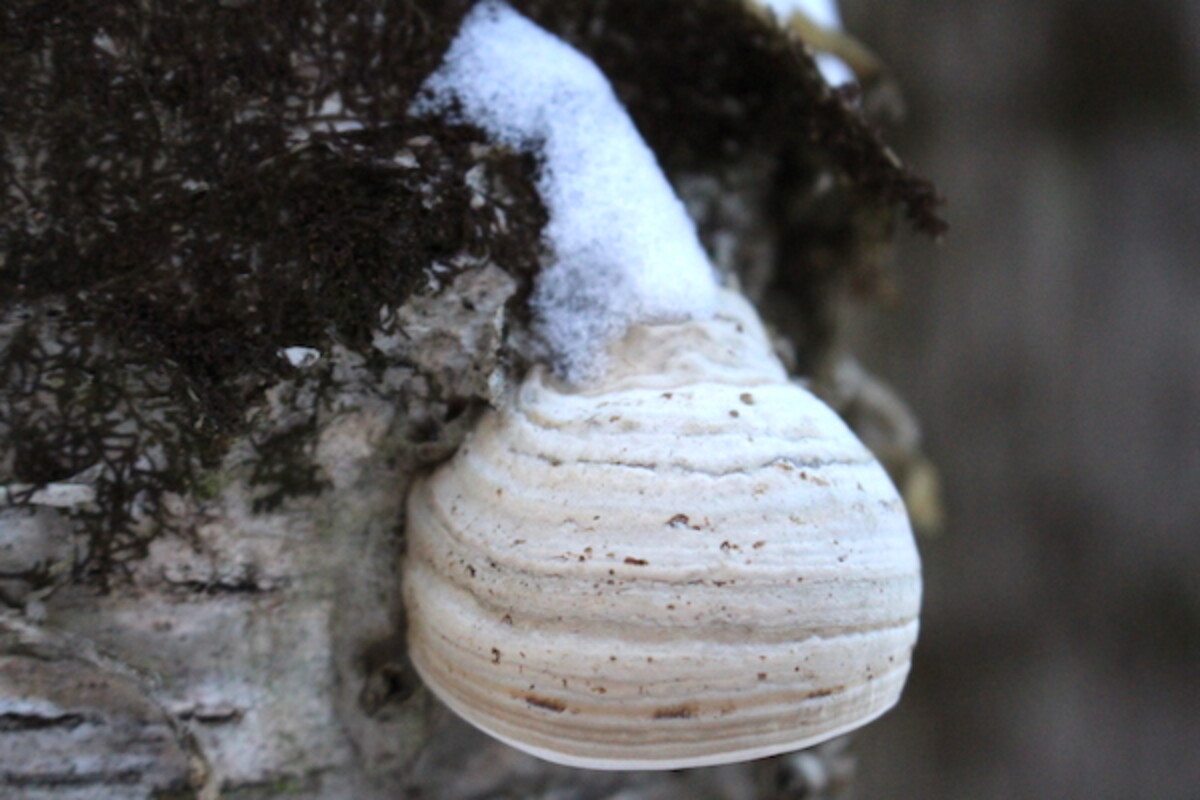
Generally, mushroom pickings are slim in the winter time, but that doesn’t stop me from going out winter foraging. I had my eye out for Chaga mushrooms and birch polypore, both of which grow on birch and are present in the winter months even up here in Central Vermont.
I spotted a birch in the distance covered in polypores and went in for a closer look. Though they were polypores, and growing on birch, they weren’t the “birch polypore” (fomitopsis betulina).
Nonetheless, I snapped plenty of pictures and went home to consult my identification books. After a quick bit of work, I learned that I had spotted Fomes fomentarius, a medicinal mushroom whose use dates back more than 5000 years.
Also known tinder fungus, tinder conk, tinder polypore, Iceman fungus, hoof fungus and Amadou, this little mushroom may not be a tasty edible but it has a lot of use for medicine and survival.
Identifying Tinder Polypore (Fomes fomentarius)
These mushrooms grow on both dead and dying wood, acting as first a parasite and then a decomposer. The mushrooms themselves are perennial, first emerging in the spring but then persisting all winter and growing larger each year.
They grow directly on the wood with little to no stem and resemble a hoof. The texture is both banded in color and ridged in texture, as well as hard and dry.
It is a polypore, which means the pore surface lacks gills and has small pores instead. The pore surface is generally brownish to grey, and there’s a small ridge as the pore surface meets the edge of the mushroom, which is more clearly seen from underneath.
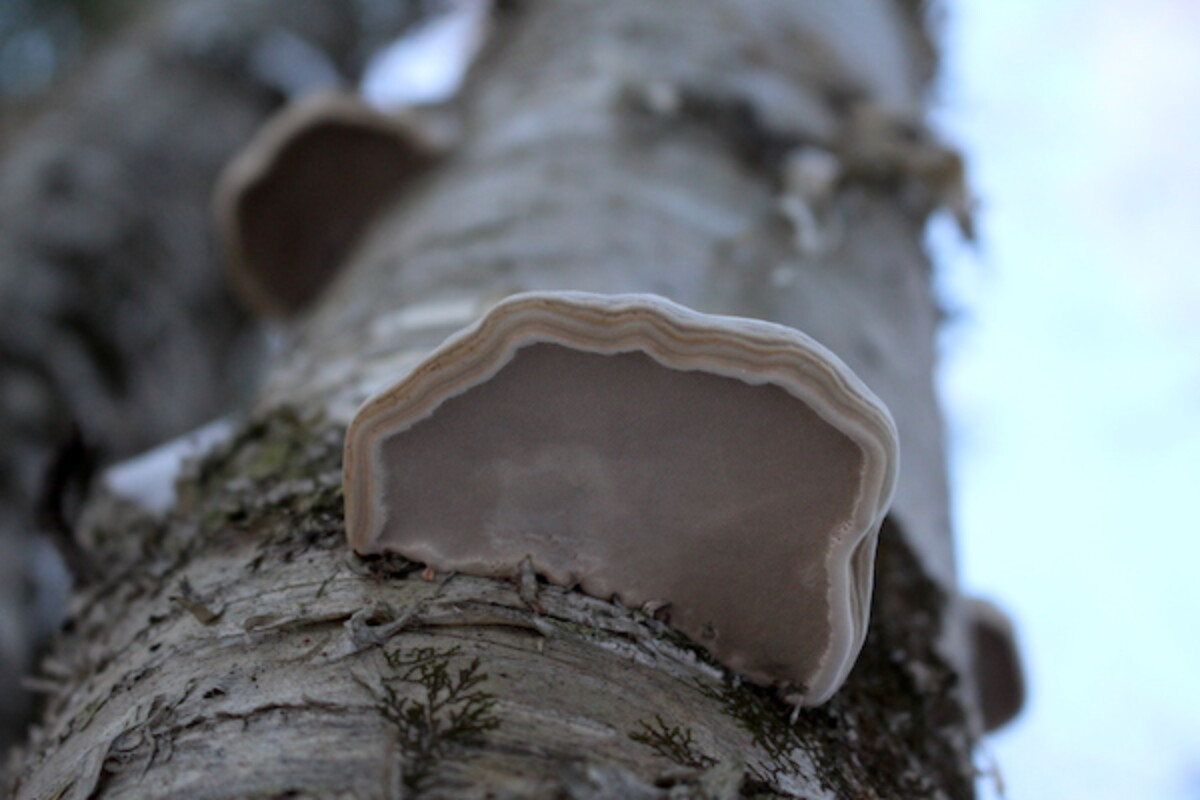
Tinder Polypore Look-Alikes
My book, Mushrooms of the Northeast, lists three look-alikes for Fomes fomentarius, both of which are also medicinal mushrooms.
- Birch Polypore (fomitopsis betulina) also grows as a hoof-shaped polypore, but it lacks banding in color and texture on the surface, and it’s generally brown in color. It also only grows on birch trees, whereas tinder polypore grows on many different hardwood species.
- Willow Bracket (Phellinus igniarius) has a similar shape, but it’s generally dark in color with a charred appearance. The surface also develops plate-like cracks vertically which gives it the appearance of a horse hoof shaped lump of charcoal. We have quite a few of these on our land, and I’ll get a picture shortly, but they’re pretty dramatically different from tinder polypore in every way except the horseshoe shape.
- Artists Conk (Ganoderma applanatum) is a polypore, but it’s often flatter in shape. The pore surface also instantly bruises brown, which makes it a great tool for creative artists who use the mushrooms to create long-lasting art. It looks a lot more like a reishi mushroom than a tinder polypore to me, and it’s in that same Ganoderma genus.

Tinder and Fiber Uses
Scientists assume that the iceman from 3300 BC was carrying this polypore as a source of tinder. Like chaga, and other hard dry mushrooms, they’re a good source of fire starting fuel especially in the cold wet winter months when tinder is hard to come by. Dried pieces of it were found in a pouch with other small tools, including fire-starting implements.
Later in human history, as people led more settled lifestyles, traveling with tinder was less important and tinder polypore was processed to make fiber. A spongy fiber made from Fomes fomentarius is known as Amadou, and it’s still made today.
The mushrooms are pounded and then soaked or cooked in a solution of either potassium nitrate or sodium carbonate before being spread out to dry in sheets. The result is a fiber that’s strangely like leather and can be used to make clothing. Paul Stamets, the author of the famous mushroom book Mycelium Running, wears a hat made out of Amadou, which I have to admit is rather fitting.
There are still traditional makers of Amadou, mostly in eastern Europe, and they make bags and hats from the fiber. The material is incredibly absorbent, so it’s also used to make a special tool used in fly fishing that quickly drys out fly lures when they get waterlogged.
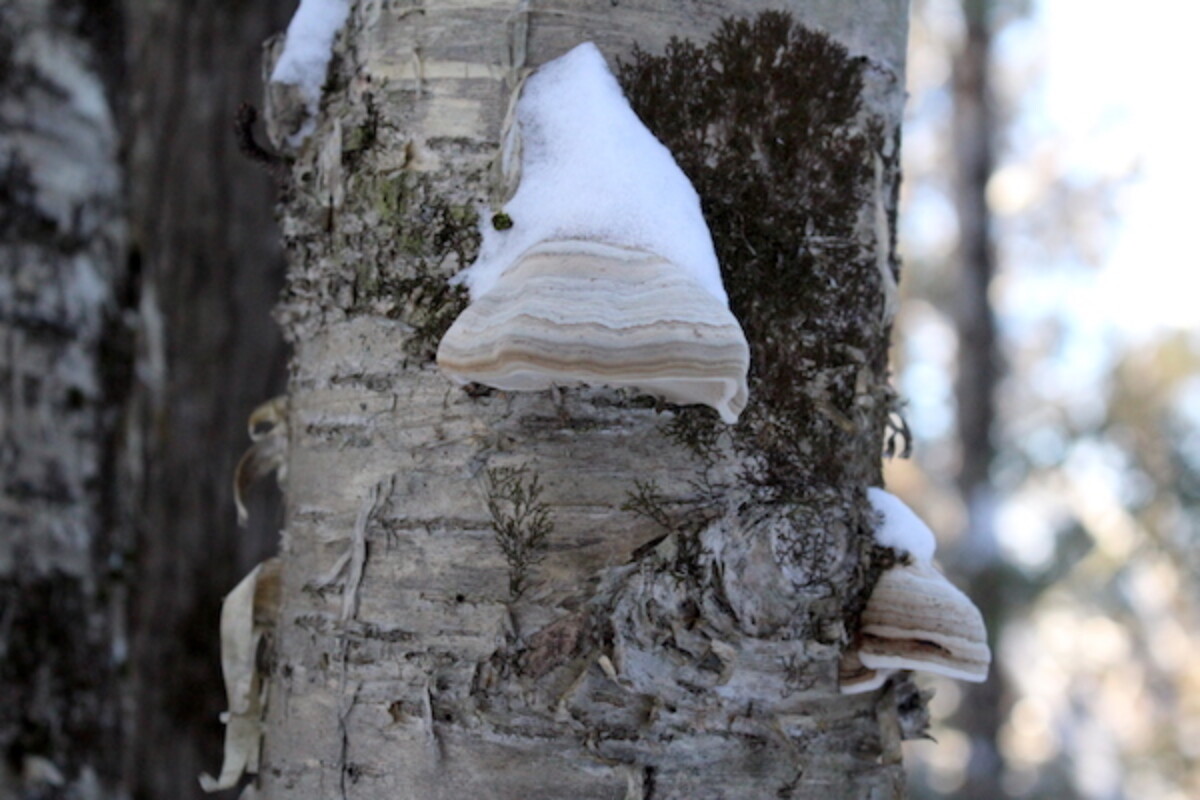
Medicinal Uses of Fomes fomentarius
While it’s widely assumed that the Iceman was carrying this fungus as a source of tinder, others believe he may have been harvesting it as a medicinal mushroom. Just because a man lived thousands of years ago doesn’t mean he didn’t have medicinal needs, or that his people wouldn’t have known the medicinal uses of local plants and mushrooms.
Quite the contrary actually. Without modern medicines, it’s likely that his people were far more resourceful at identifying medicinal mushrooms in their landscape.
The other mushroom he was carrying was birch polypore (fomitopsis betulina), and pieces of it were strung on a necklace. That is also a type of tinder mushroom, but since it was found far from his tools on a necklace, researchers assume he was using that mushroom to treat intestinal parasites.
Just because the pieces of Fomes fomentarius were found in a pouch with tools, doesn’t mean that tinder was their only use. It may have just been a convenient place to put a recent find.
Modern science has confirmed that Fomes fomentarius has antibiotic properties, along with a host of other benefits. Mushroom expert Tradd Cotter sums it up nicely,
“These mushrooms are wonderfully rich in compounds similar to those of turkey tail (Trametes versicolor), including polysaccharide-K, a protein-bound polysaccharide commonly used in Chinese medicine for treating cancer patients during chemotherapy. Studies have found that these mushrooms can help boost and modulate immune system function, regulate blood pressure and sugar levels, lower cholesterol, and provide cardiovascular and digestive support. They contain antiviral and antibacterial properties as well as anti-inflammatory compounds, and they also have been shown to suppress many cancer cell lines. (Source)”
Historically, it’s also been used to disinfect wounds and staunch bleeding.
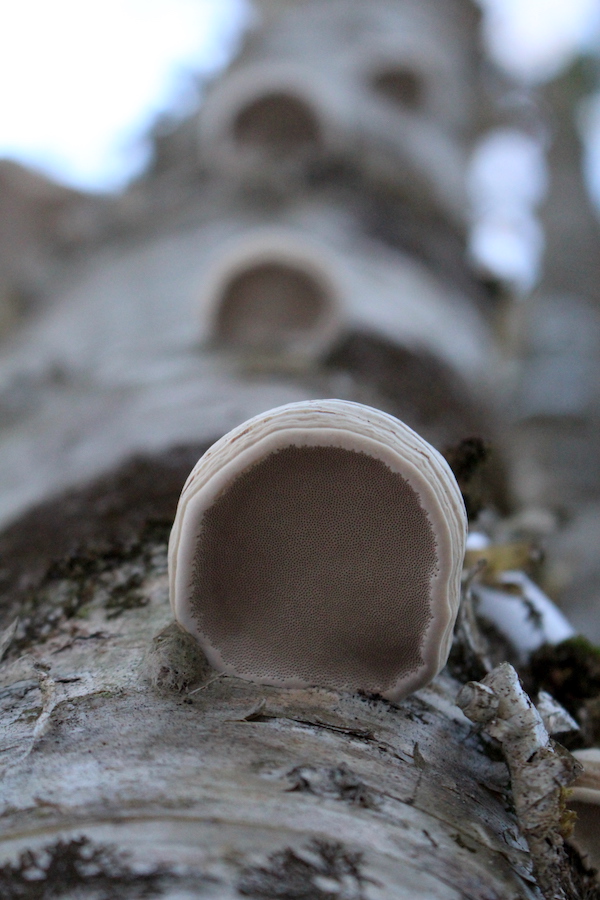
Cultivating Fomes fomentarius
I found myself flipping through my copy of Organic Mushroom Farming and Mycoremediation looking for some quick information on growing oyster mushrooms in closets, and the book happened to fall open on a page specifically about growing Iceman Polypore. I really love this book, it has information on how to grow just about everything you could imagine. In this case, I actually never would have guessed you could cultivate Fomes fomentarius but it’s listed as relatively easy (3 out of 10) to grow.
The instructions are very detailed, spanning 4 pages, starting with how to extract wild spawn:
“Harvested conks can be submerged upside down in water, weighed down to keep them from floating, with their attachment point sticking up above the water, and capped with wet cardboard. Mycelium leaps to the cardboard in one week, giving you viable samples to plant into downed trees and stumps by wafering (inserting small pieces of the cardboard into wounds created by machete or hatchet).”
After that, it takes somewhere between 1 and 3 years before fruiting bodies will begin to develop. That said, the author notes that expected yields are very low because this type of mushroom is “extremely slow growing, making them increasingly rare in the wild.”
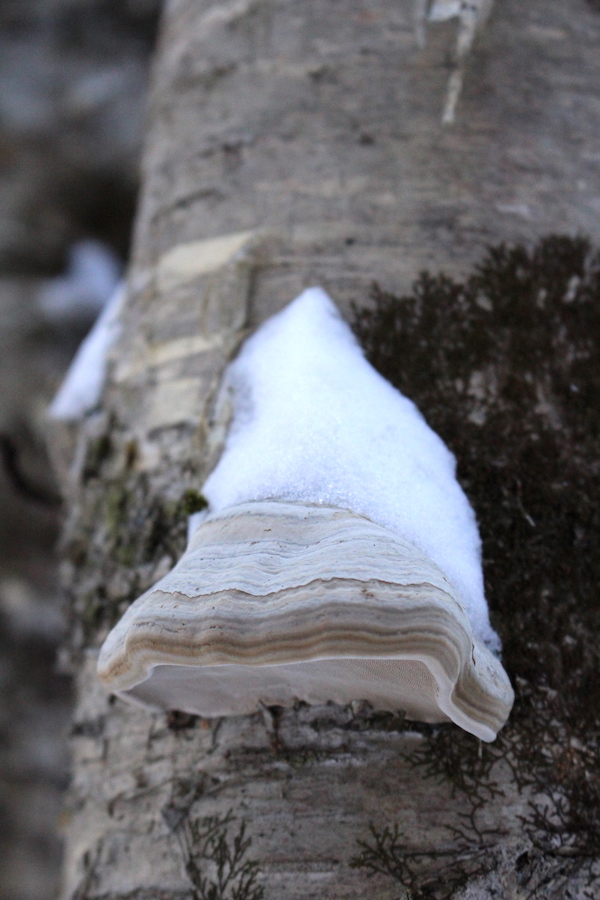
Harvesting Tinder Polypore
Thus far, I’ve only “harvested” pictures of tinder polypore and marked its location in my mind for future harvest. It sounds like it’s growing less common in the wild due to overharvesting, especially since it’s slow-growing.
While I’d love to try to make my own mushroom fiber bag, it sounds like a better idea might be to harvest a small amount for cultivation. There are plenty of downed trees on our land, and harvesting spawn sounds relatively straightforward.
In the spring, I’m going to go back and harvest two of the fruiting bodies. One for cultivation, and the other to process for my own fire-starting kit.
If by some chance I managed to die out foraging in the woods, I’d get a kick out of the slightly morbid thought that I’d have a pouch full of the same mushrooms that a man 5000+ years ago carried at his death. There’s something strangely fulfilling about it, and it gives me small comfort in my connection to people’s long since lost.
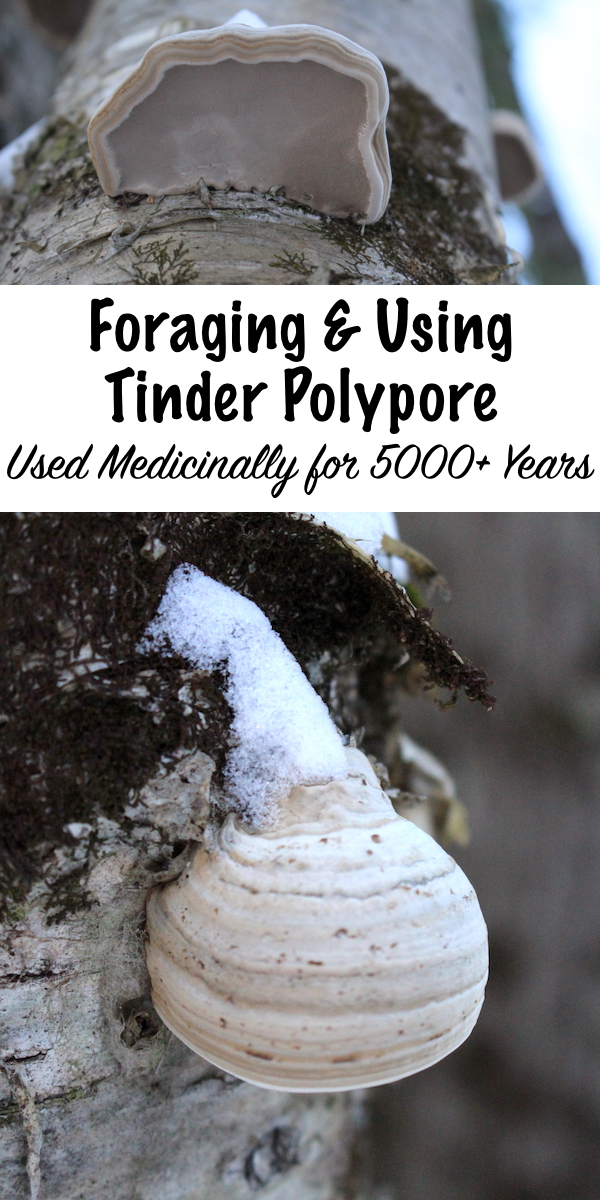

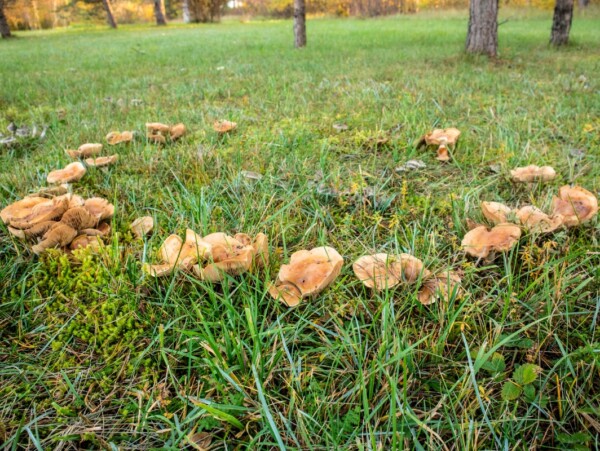
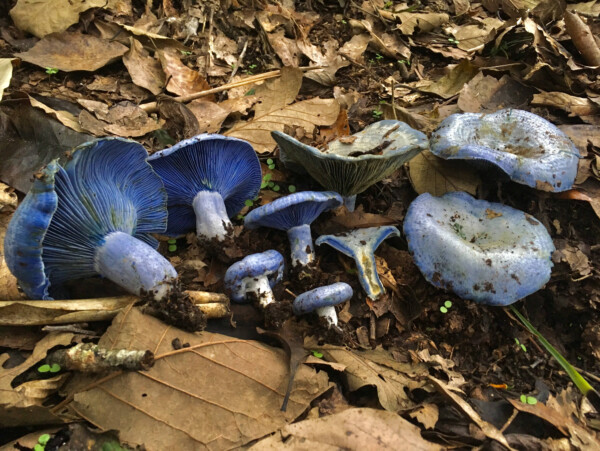
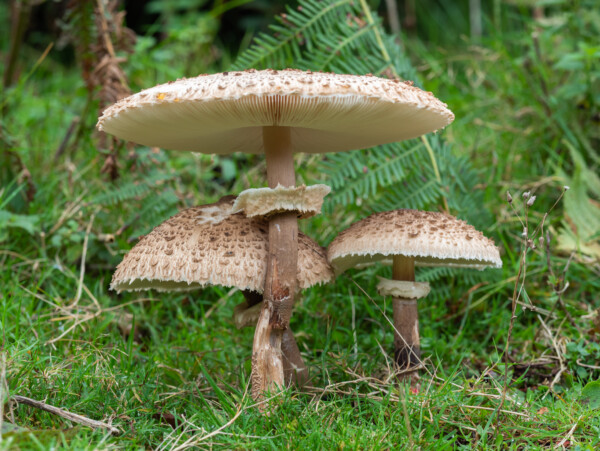










Friendly reminder that indigenous folks have been using these organisms for thousands of years and that much of the cultural knowledge we have today results from their efforts. In addition, articles like these, while informative, continue to propagate the erasure of native peoples and cultures that are still present all over the world, despite colonialist attempts at genocide. Not saying you’re doing this intentionally, but much more credit needs to be given to the holders of most of the planet’s biodiversity and water protectors
Your right Joe – but holy – get a grip
INDIGENOUS PEOPLE COME IN ALL COLORS AND COME FROM ALL COUNTRIES, JOE. INDIGENOUSLY MY PEOPLE ARE FROM ROMANIA, FRANCE AND MORE RECENTLY CANADA. I AM INDIGENOUS TO MICHIGAN AS WELL. YOURS?
Thanks for the fantastic info! I broke a piece off a birch and just thought it was some common tree fungus. I thought it was special so I kept it, lol.
Hello Ashley, thank you for reminding us about the healing power of Nature. I love your pics and explanation.
I just need to correct you on the location of Otzi, the iceman.
He is called Otzi because he was found in what is called Oetztaler Alpen. That is a mountain range along the Austrian-Italian border. However, it was confirmed by geo-location that he died 92 m on the Italian side of border so, Italy has the claim for him.
Over the past decades of scientific exploration of his mummified remains it turns out that he had a gash down to the bone on his hand that had already started to heal by the time he died ( scabbed over) and, that he had a flint arrow head lodged in his shoulderblade that had severed an artery. He also had his head bashed in( after he got shot with arrow).
The scabbed over severe gash to the bone on his hand seems to make it clear that he needed that polypore badly and I bet you that is what he used, besides the antimicrobial moss that was also found on him) to heal that wound.
Yes, he was found in the Italian Alps, not the Swiss Alps.
Great article but, it’s polypore, not polyspore. No “S” in the mushroom name. Totally different animal.
Oh my goodness, my spelling is ALWAYS horrible, thank you so much for catching that. I’ll go fix it…
I appreciated the thought put into this article. I often come by beautifully pristine birch polypores and after collecting a few specimens for my dried collection, I’ll admire them, or poke at em.. I have found tinder polys only a few times and it’s been like one or two on a dead trunk .. point being, I also have found these polypores to be on the rarer side. Could be possible that certain animals have a greater affinity for them, toughness aside?
I also found your thoughts on connecting with the ancient ice man to be rather sweet.
Thanks for taking the time and hope you and yours are well.
Abbey
Thanks so much Abbey!